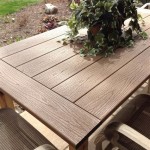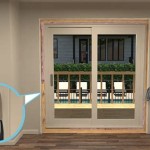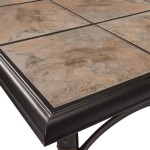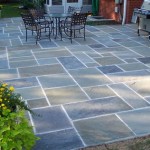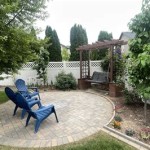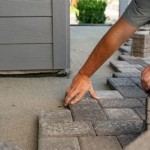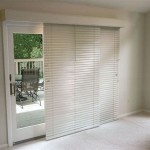How Much Does It Cost To Convert A Patio Into A Sunroom?
Converting a patio into a sunroom is a popular home improvement project that can significantly enhance the living space and property value. It offers an opportunity to enjoy the outdoors while remaining protected from the elements, extending the usability of the area throughout the year. However, the cost of such a conversion can vary widely, dependent on several factors including the size of the patio, materials used, complexity of the design, and local labor rates. This article will delve into the various elements that contribute to the overall expense, providing a comprehensive understanding of the financial considerations involved in transforming a patio into a sunroom.
Before embarking on this project, it is crucial to establish a realistic budget. Understanding the scope of the conversion and the potential costs associated with each aspect will help in making informed decisions and avoiding unexpected financial burdens. The following sections will outline the primary cost drivers, providing a framework for estimating the total investment required.
Key Cost Factors in Patio-to-Sunroom Conversions
Several elements contribute to the final cost of converting a patio into a sunroom. These factors must be carefully evaluated to develop an accurate budget and ensure the project aligns with financial goals.
1. Size and Scope of the Project: The size of the patio is a primary determinant of cost. Larger patios will naturally require more materials and labor, leading to higher overall expenses. The scope of the project also plays a significant role. A simple conversion involving only enclosing the existing patio may be less expensive than a more complex project that requires structural modifications, foundation work, or significant electrical and plumbing upgrades.
2. Materials: The choice of materials will substantially impact the budget. Sunrooms can be constructed from a variety of materials, including aluminum, wood, vinyl, and composite materials. Each material offers different levels of durability, aesthetics, and thermal efficiency, which are reflected in their price. For example, wood frames offer a classic look but require more maintenance and are generally more expensive than vinyl frames. Similarly, the type of glass used for the windows will influence the cost. Options range from single-pane glass to energy-efficient double- or triple-pane glass with low-E coatings and argon gas fills. The type of roofing material chosen will also impact the overall cost. Options include asphalt shingles, metal roofing, and polycarbonate panels. Each offers advantages in terms of durability, aesthetics, and insulation.
3. Design and Complexity: The design of the sunroom can significantly influence the project's complexity and, consequently, the cost. A simple rectangular sunroom will be easier and less expensive to construct than a custom-designed sunroom with intricate angles, curves, or architectural details. The complexity of the roof design also plays a role. A simple gable roof is generally less expensive than a more complex hip roof or a custom-built roof with skylights. Furthermore, any modifications to the existing structure, such as removing walls, relocating doors or windows, or adding new support beams, will increase the complexity and cost of the project.
Detailed Breakdown of Potential Costs
To provide a clearer understanding of the financial implications, a more detailed breakdown of potential costs is presented below. These figures are estimates and can vary based on location and specific project requirements. It is always recommended to obtain multiple quotes from qualified contractors to get a more accurate assessment of the costs involved.
1. Foundation and Framing: If the existing patio does not have a suitable foundation, installing one will be a significant expense. A concrete slab foundation can cost between $4 to $8 per square foot, including labor and materials. The framing cost will depend on the material used. Wood framing is generally more expensive than aluminum or vinyl framing, ranging from $5 to $15 per square foot. This includes the cost of lumber, fasteners, and labor for constructing the frame.
2. Windows and Doors: Windows and doors represent a considerable portion of the overall cost. Single-pane windows are the least expensive option, but they offer minimal insulation. Double-pane windows are a good balance of cost and energy efficiency, while triple-pane windows provide the best insulation but are the most expensive. Double-pane windows can range from $300 to $800 per window, while triple-pane windows can cost $500 to $1,200 per window. The cost of doors will depend on the type and material. Sliding glass doors can range from $500 to $2,000, while French doors can cost $1,000 to $3,000 per door, depending on the quality and features.
3. Roofing: The cost of roofing depends on the material chosen and the complexity of the roof design. Asphalt shingles are the most affordable option, ranging from $1 to $3 per square foot. Metal roofing is more durable and can last longer but is more expensive, ranging from $5 to $15 per square foot. Polycarbonate panels are a lightweight and transparent option, but they may not provide as much insulation as other materials, costing $3 to $10 per square foot.
4. Electrical and Plumbing: If the sunroom requires electrical wiring for lighting, outlets, or climate control, this will add to the cost. Electrical work can range from $50 to $100 per outlet or light fixture, depending on the complexity of the wiring and the local labor rates. If plumbing is required for a sink or other fixtures, this will also add to the cost. Plumbing work can range from $500 to $2,000, depending on the complexity of the installation and the distance to existing plumbing lines.
5. Flooring: The choice of flooring material will impact the overall cost and aesthetics of the sunroom. Common flooring options include tile, hardwood, laminate, and carpet. Tile is a durable and water-resistant option, ranging from $5 to $20 per square foot. Hardwood flooring offers a classic look but requires more maintenance, costing $8 to $25 per square foot. Laminate flooring is a more affordable alternative to hardwood, ranging from $3 to $10 per square foot. Carpet is a comfortable and warm option, costing $2 to $8 per square foot.
6. Insulation and Ventilation: Proper insulation is essential for maintaining a comfortable temperature in the sunroom year-round. Insulation costs will depend on the type of insulation used, such as fiberglass batts, spray foam, or rigid foam boards. Fiberglass batts are the most affordable option, while spray foam provides the best insulation but is more expensive. Insulation costs can range from $1 to $5 per square foot. Proper ventilation is also important to prevent moisture buildup and maintain air quality. Ventilation options include windows, vents, and exhaust fans. The cost of ventilation will depend on the type of system chosen, ranging from $100 to $500 for a simple exhaust fan to $500 to $2,000 for a more complex ventilation system.
7. Permits and Inspections: Building permits are typically required for sunroom conversions to ensure compliance with local building codes and regulations. The cost of permits can vary depending on the location and the scope of the project, ranging from a few hundred dollars to several thousand dollars. Inspections are also required at various stages of the project to ensure that the work is being done correctly and safely. Inspection fees are typically included in the permit cost or charged separately.
8. Labor Costs: Labor costs represent a significant portion of the overall project cost. The cost of labor will depend on the complexity of the project, the skill level of the contractors, and the local labor rates. General contractors typically charge 10% to 20% of the total project cost for their services, which include project management, coordination, and supervision. Skilled tradespeople, such as carpenters, electricians, and plumbers, typically charge hourly rates ranging from $50 to $150 per hour.
Cost-Saving Strategies
While converting a patio into a sunroom can be a significant investment, there are several strategies to potentially reduce costs without compromising the quality of the finished product.
1. Obtain Multiple Quotes: The most important step in controlling costs is to obtain multiple quotes from qualified contractors. Comparing quotes allows for negotiation and ensures that the price is competitive. It is crucial to carefully review each quote to understand what is included and to identify any potential hidden costs. Check online reviews and verify the contractors' licenses and insurance before making a decision.
2. Choose Affordable Materials: Selecting less expensive materials can significantly reduce the overall cost. For example, choosing vinyl frames instead of wood frames or laminate flooring instead of hardwood flooring can save money. However, it is essential to balance cost savings with durability and aesthetics. Researching different materials and comparing their prices and performance can help in making informed decisions.
3. Consider a DIY Approach (with caution): Performing some of the work yourself can save on labor costs. However, it is crucial to only undertake tasks that are within your skill level and expertise. Attempting to do work without the necessary skills or knowledge can lead to mistakes that are costly to fix. Tasks such as painting, flooring installation, or basic framing can be done by homeowners, while more complex tasks such as electrical wiring, plumbing, and structural modifications should be left to professionals.
4. Simplify the Design: A simple and straightforward design will be less expensive to construct than a complex or custom design. Avoiding intricate angles, curves, and architectural details can save on both materials and labor costs. A simple rectangular sunroom with a gable roof is generally the most cost-effective option.
5. Phased Construction: If the budget is limited, consider completing the project in phases. For example, the basic structure can be built first, followed by interior finishes such as flooring, lighting, and climate control at a later date. This allows for spreading out the costs over a longer period.
General Cost Ranges
Considering all the factors mentioned above, the cost of converting a patio into a sunroom can vary significantly. A basic three-season sunroom, which is typically unheated and used only during milder weather, can range from $10,000 to $30,000. A more elaborate four-season sunroom, which is heated and cooled and can be used year-round, can range from $30,000 to $80,000 or more.
These are broad estimates, and the actual cost will depend on the specific project requirements. It is highly recommended to consult with qualified contractors and obtain detailed quotes to get a more accurate assessment of the costs involved in converting a patio into a sunroom.

Fixr Com Sunroom Addition Cost To Build

Converting Our Screened Porch To A Sunroom

How Long Does It Take To Build A Sunroom Screen Porch Conversions Patio Enclosures 3 Season Sunrooms

Patio Enclosures Convert Your Porch To Sunroom Area

How Much Does A Sunroom Cost To Build 2024

How Much Should A Sunroom Cost Forbes Home

How Much Does A Sunroom Cost To Build 2024

Diy Sunroom How To Convert A Porch Framing And Windows Run Radiance

Open Er Up Converting A Sunroom Into Veranda Young House Love

What You Need To Know About Converting A Porch Three Seasons Room

